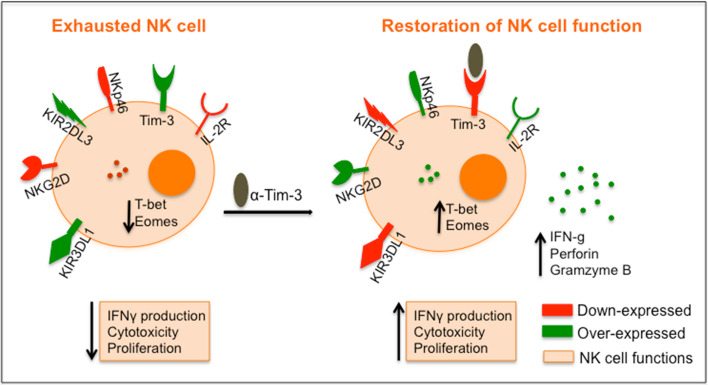Fig. 2.
Schematic representation of NK cell exhaustion phenotype and its in vitro reversal after checkpoint inhibitor treatment. Exhausted NK cells in melanoma are characterized by (1) reduction of proliferative capacity to IL-2 and cytotoxic activity against melanoma lines, as well as cytokine production (IFN-γ) in response to activation; (2) reduced expression of activation receptors and IL-2R subunits and NK cell regulatory transcription factors (T-bet, Eomes), (3) upregulation of inhibitory receptors. In this figure, we made a schematic representation for an in vitro assay shown in Da Silva., et al. where after 1 h treatment with anti-Tim-3-blocking antibody freshly isolated NK cells from melanoma donors were able to reverse this phenotype and state of exhaustion in vitro, restoring 30–65 % of the NK cell dysfunction. The black oval ligand represents anti-Tim-3-blocking antibody. Blockade of Tim-3 in vitro was able to overexpress IL-2 receptor on NK cell surface, as well as expression of the transcription factors T-bet and Eomes. Moreover, blockade of Tim-3 is enough for exhausted NK cells (1) to recover their capacity for producing IFN-γ after IL-12 stimulation, (2) to recover their cytotoxic capacity for killing other targets cells and (3) to proliferate

